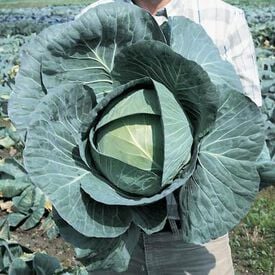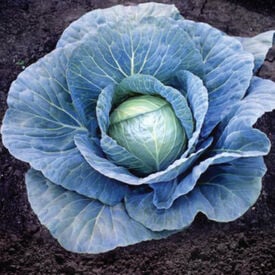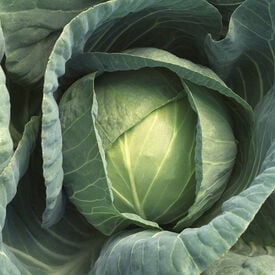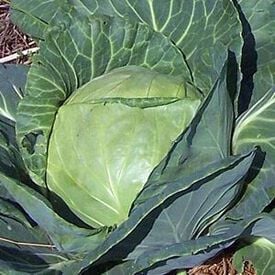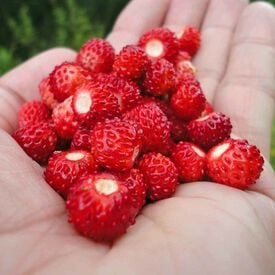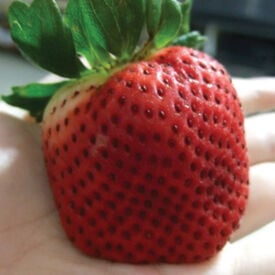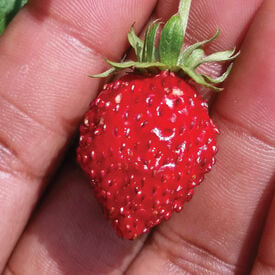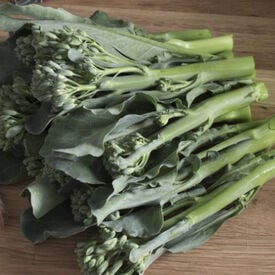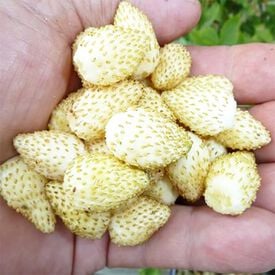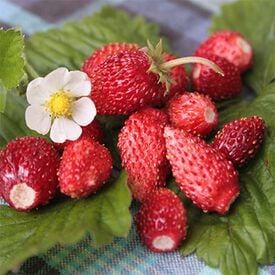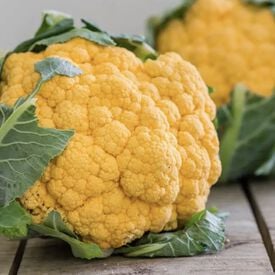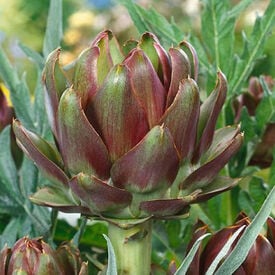Great field cabbage performance. A rugged hybrid that produces well in Southern winters and Northern summers. Produces large, blue-green heads with cream colored inside. Uniform cabbage that works great for markets.
Blue Vantage produces dense and large heads with short cores. A mid-season maturity that is ideal for fresh eating or coleslaw. Great resistance to Fusarium yellows race 1 resistant and tipburn tolerant.
Bobcat is a high producing fresh-market variety that has long storage life. Excellent flavor and good resistance to disease. Due to its high yield potential, Bobcat is suitable for coleslaw production.
This cabbage is known for its solid head and excellent flavor. Late Flat Dutch is a big cabbage, it is a good keeper and the standard late season variety. Heads form up to 12 inches and weigh as much as 15 pounds. Late Flat Dutch has an excellent flavor.
Ruegen is an heirloom cultivar that is still as good today as it was when it was first selected. Several cultivars on the market today have been selected from Ruegen. Also known in various European countries as 'Rügen', 'Rujana', 'Rjugen', and 'Rugia'.
Very large fruits with juicy flesh! These large growing strawberries are the largest on the market. Great flavor. Perfect for farmers markets.
Storage #4 is a great producer of dark green color cabbage that have excellent storage life. This versatile variety also works great in the late fall for fresh market, especially in muddy and rainy conditions. Due to its earliness when used for storage, we recommend later season plantings for best storage results.
'Reine des Vallees' is grown in Europe by home gardeners and commercial fruit growers. Its name in French means "Queen of the Valleys". Its name in Italian is Regina delle Valli. Whatever the name, this cultivar is THE standard in Europe for alpine strawberries. The major fruit exporting growers in Europe grow this variety exclusively. Reine des Vallees is a clumping type (produces few to no runners) and is day neutral which means that flowering is not dependent on day length. It is very productive and produces scarlet red fruit with the distinctive wild strawberry flavor and aroma that is expected from fraises des bois.
Happy Rich Baby is an excellent summer producing baby broccoli. Produces uniform, vigorous, dark-green florets that look like baby broccoli heads. One of the best flavors broccoli flavors with hints of sweetness. Produces generous amounts of side shoots when first floret is pinched out and plants are spaced 12-18" apart.
'White Soul' is a white fruiting variety that has been around for several years. It is a clumping type (few to no runners) and is day neutral meaning that flowering is not day length dependent. The fruit is among the largest white fruit produced by alpines. Has the wild strawberry flavor and aroma expected from alpines and has a hint of pineapple flavor. I consider white alpine fruit to be sweeter than red alpine fruit in general. Tends to be a very strong grower and top producer. This variety will "fool the birds". They don't go after the fruit as much as they do for red fruit.
Red Wonder, aka Fraises des Bois, is a tasty Alpine Strawberry that is easy to grow from seed. Red Wonder is one of our favorites because it's considerably sweeter than most strawberries. An everbearing strawberry plant that produces all summer long.
The Orange Dream cauliflower performs like a dream in outdoor and greenhouse growing conditions. This cauliflower is a medium-large plant. Orange Dream is a pastel orange cauliflower that exhibits great tolerance to heat and stress.
The Purple Italian Globe Artichoke, scientifically known as Cynara scolymus var. scolymus, is a stunning and delectable vegetable that has a rich history dating back to ancient times. Originating in the Mediterranean region, this particular variety of artichoke has been cultivated for centuries and is prized for both its ornamental appearance and culinary value. Its striking purple and green hues make it a unique addition to any garden or dinner table. In terms of taste, the Purple Italian Globe Artichoke boasts a mild, nutty flavor with a slightly sweet and earthy undertone. The tender inner leaves and heart are the most sought-after parts and are often used in various dishes, from salads and dips to braised or roasted preparations. The artichoke can grow to a substantial size, typically reaching diameters of 4 to 6 inches, making it a substantial vegetable for cooking. The Purple Italian Globe Artichoke is known for its longer days to maturity, typically requiring around 150 to 180 days from planting to harvest. Each plant typically yields multiple artichokes, and they can be propagated from seeds or offsets. These plants thrive in well-drained, nutrient-rich soil and prefer full sun exposure. Adequate spacing and regular watering are essential for optimal growth. Overall, this variety of artichoke offers not only a delicious addition to your culinary endeavors but also a visually striking and historical component to your garden.
